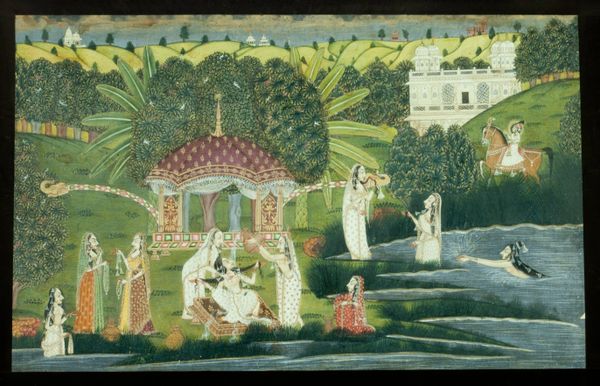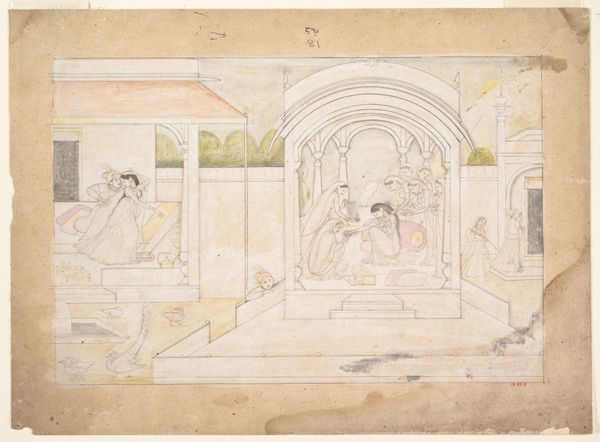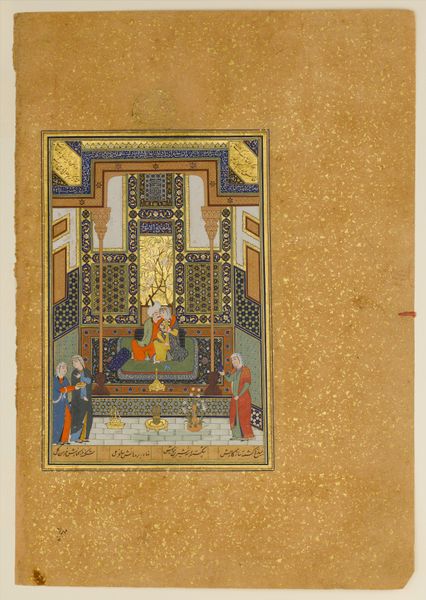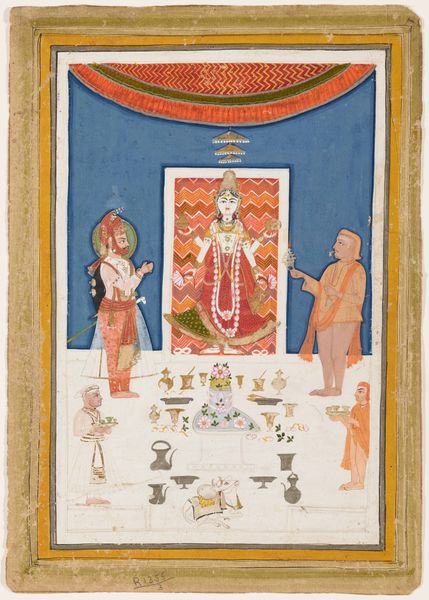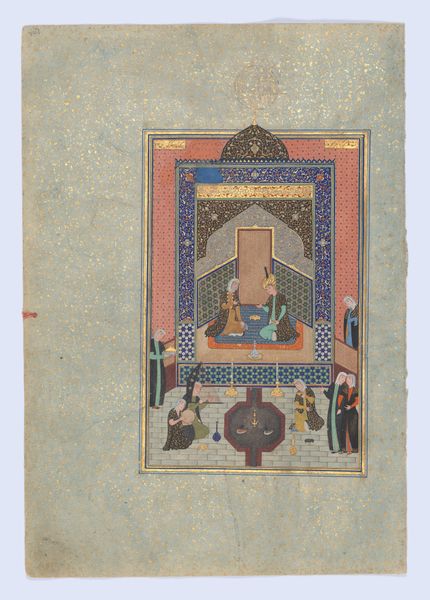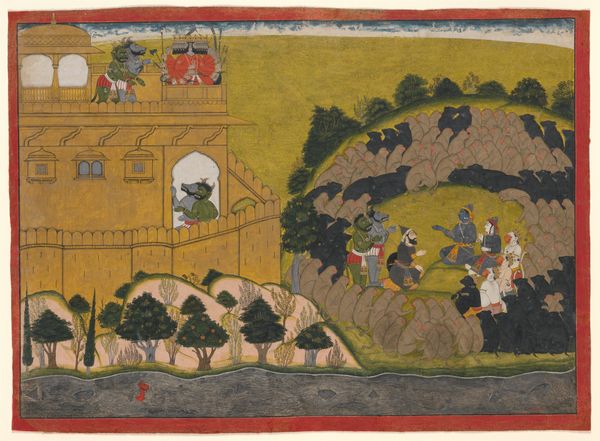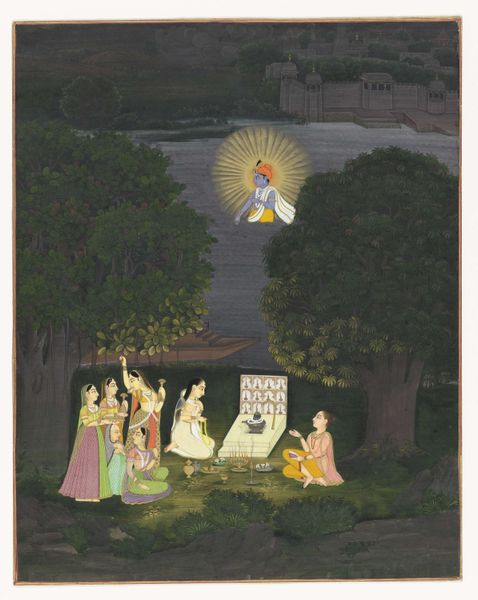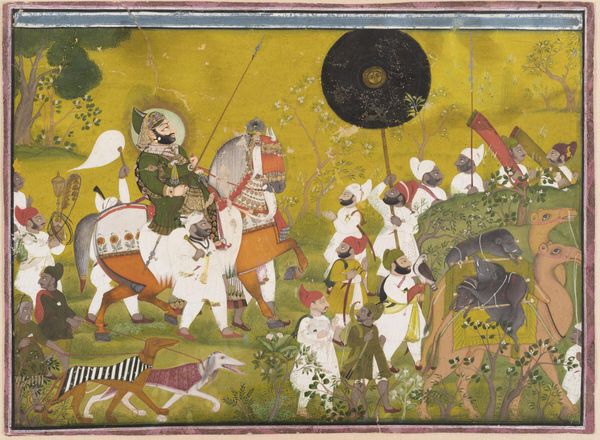
painting, watercolor
#
water colours
#
narrative-art
#
painting
#
asian-art
#
landscape
#
ukiyo-e
#
figuration
#
watercolor
#
orientalism
#
miniature
Dimensions: Image: 11 1/2 x 14 7/8 in. (29.2 x 37.8 cm) Page: 12 3/16 x 15 15/16 in. (31 x 40.5 cm)
Copyright: Public Domain
Editor: So, here we have "Escapade at Night," a watercolor painting from the early 1800s by Chokha, currently at the Met. It's a miniature, rendered in an oval format. It depicts a nocturnal scene filled with figures and architecture, almost dreamlike. What grabs your attention in this work? Curator: My eye immediately goes to the way Chokha uses the materiality of the watercolor. Notice how the pigments are applied in thin, translucent layers, particularly in rendering the architecture and the night sky. It wasn't just about depicting a scene, but manipulating the very substance of color to evoke a mood, wasn't it? Editor: Yes, and the building in particular—it feels almost weightless due to the coloring, but then grounded with detail like the figures along the bottom. How does that affect your perception? Curator: Consider the labor involved in creating these pigments. Were they locally sourced or imported? The deep blues and reds likely came at a cost, indicating access to trade networks and economic power. Think, too, about the commissioning of this work—who was the patron and how did their social status dictate the choice of materials and the level of detail we see here? Editor: So, the materials and even their availability play a crucial role in understanding the context. I hadn't considered the economic implications of the pigments themselves. Curator: Exactly. The miniature format also points to a specific mode of consumption. Was this a private artwork meant for intimate viewing? Or could its materiality hint at social functions? Consider how the artist negotiates their cultural influences as they translate between styles and trends of production. Editor: This definitely provides a much more profound and grounded reading. Thanks! Curator: It's about uncovering the layers of meaning embedded within the materials themselves. There is always a complex story when looking at historical materiality!
Comments
No comments
Be the first to comment and join the conversation on the ultimate creative platform.

